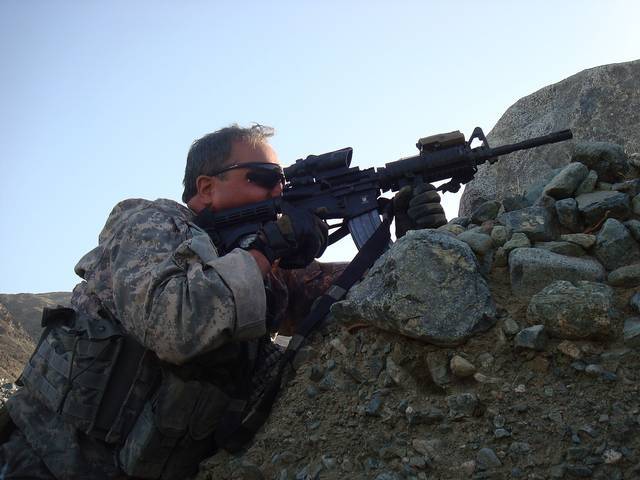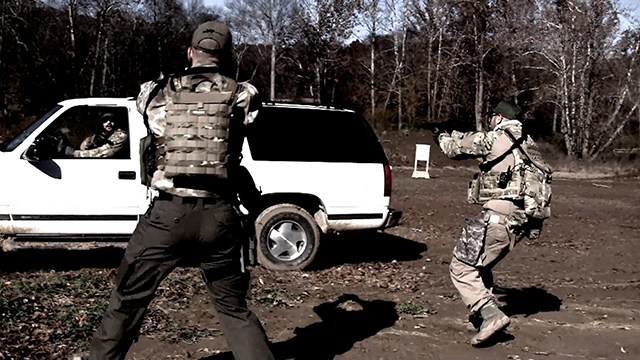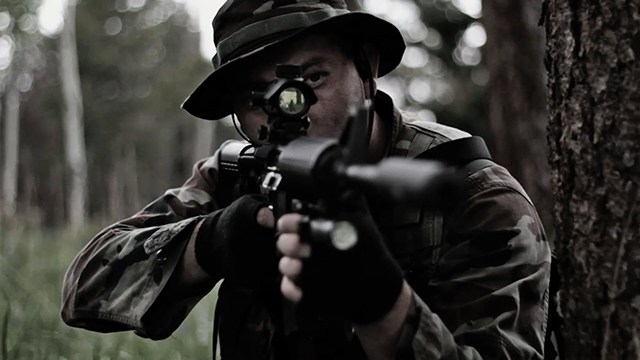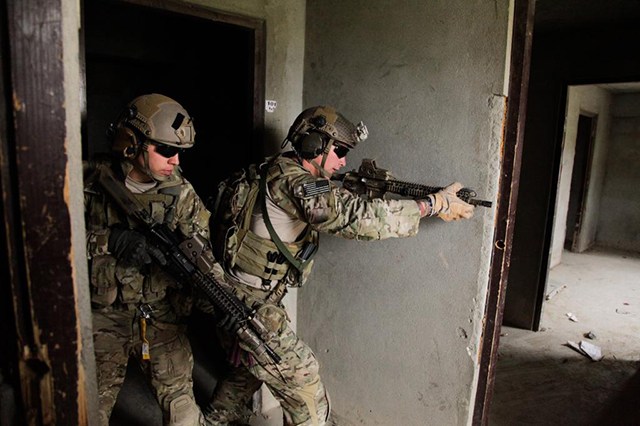
There may be situations if you are trained and armed when you will have to take aggressive action and counter-attack those who are attacking you. For example, an ambush that does not kill all those in the kill zone or just disables your vehicles, to get out of the kill zone you may have to attack the ambush party. An attack on a residence where access has been gained by the attackers, the residents or security team must clear any attackers from the residence. An attack on a shopping mall or hotel where you may be visiting or staying and aggressive action would be required to evacuate the location.
This is very basic information and can help you establish your own procedures if you are in a situation where you have the capabilities for counter-attack options. This is based on basic procedures for close protection teams and can be adapted to most situations.
Note: You cannot learn the skills required for this by reading a book or this document, you have to learn to shoot and train tactically for these tasks. This section can help you establish your procedures; you won’t become a Ninja by reading this!
There are three fundamental elements to aggressive actions:
- Speed
- Surprise
- Aggression
For your action to be successful you must have at least two of the above elements
Mobile counter-attack
The conventional military response to an ambush is to attack the ambush. In most cases an individual or small security team would not be able to attack an ambush, for to do so would leave a client or family members without close protection when the need is greatest. Also an individual or two-man security team would not usually have the weapons or ammunition to do so to perform and assault.
The best means of attacking an ambush is to use a separate security team not responsible for the client’s immediate protection. The counter attack team should consist of people who have received training in small unit tactics and have sufficient firepower to deal with all threats. It should consist of not less than two people, in one vehicle. The counter attack team follows the client’s vehicle at a distance so that it will not become caught in an ambush on the client’s vehicle but close enough to be able to an attack the ambush quickly. The distances the team will have to be from the client will vary due to terrain, traffic etc. The protective surveillance team/personnel can be trained and used as the counter attack team.
Actions on a terrorist ambush by immediate close protection personnel:
- Return fire
- Drop smoke
- Cover Client’s vehicle and attempt to break out.
- Send contact report
When counter attack begins:
- Give covering fire.
- Remove Client from the killing zone to a safe location.
If the opportunity arises to escape before counter attack team takes action and never endanger the client because of your concern for the counter attack team.
Actions on a terrorist ambush by Counter Attack Team:
- Move to killing zone at best speed
- Use lights and siren for distractions
- Debus and attack ambush or drive at ambush.
- Do not hesitate. Fast, aggressive action is vital.
- If Client has been extricated, do not attack ambush but cover move to safe house.
- Weapons. Maximum use must be made of automatic weapons, grenades and CS gas etc.
Counter-attack on buildings
A counter attack on a building must be mounted quickly; the longer the delay, the more time the attackers will have to fortify their positions. A counter attack plan must be made and, if possible, practiced.
The counter attack team should consist of at least two people, but not more than five; i.e. a team leader and two pairs. The team leader needs as much information as possible on the situation in the building. This could be obtained from civilians, locations security team, staff by the use of radios or cell/mobile phones or social media.
The information required includes:
- The number “of attackers.
- The description of the attackers.
- Method of entry
- Types of weapons and equipment used by the attackers
- Location of the client
- Physical state of the client
- Location of any family or household staff
- Overall casualties
Methods of Entry
- If restricted by protective measures use same entry point as attackers but only as a last resort
- Enter by stealth whenever possible.
- Enter at the roof or top floor whenever possible.
- Early contingency planning to identify possible means of entry.
- Secure the entry point.
Room Clearing
- Work in pairs.
- Clear the door.
- On entering the room IDENTIFY targets before engaging with fire.
- Check all hiding places.
- When room is clear, secure and lock the door if possible.
Progression
- Control will be difficult.
- Clear the building progressively; room by room, floor by floor.
- Stairs. Once taken, stairs must be held.
- Use fire and Maneuver
- Avoid confrontation with other team members.
- Avoid being silhouetted or illuminated
- Use natural and locations lights to your own advantage.
- Use sound to disorientate the attackers: 1) Alarms. 2) Sirens. 3) Concussion Grenades.
- Use of vehicles for approach and escape. 1) Must not spoil surprise. 2) Must remain secure. 3) Must not be put to unnecessary risk,
Action when building is clear
- Ensure that the Client is safe. Do not, however, remove them from a safe room.
- Check that all attackers are dead or secured as prisoners.
- Ensure that the perimeter of the building is secure. Secure the entry point(s).
- Decide whether to hold or escape
- Co-ordinate external agencies on their arrival.
It is unlikely that plans proposed before the event will be put into effect as envisaged. The plan must be carefully thought out and rehearsed by all members of the team.























